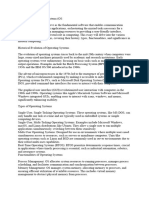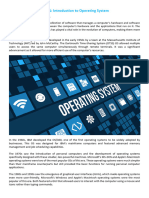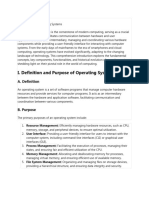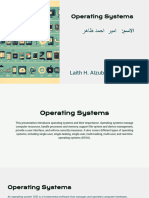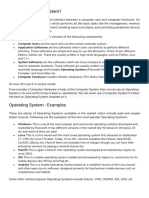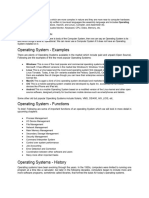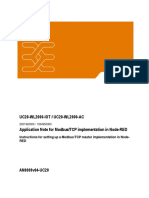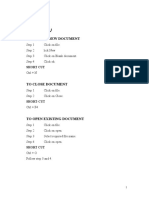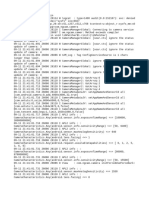0% found this document useful (0 votes)
5 views5 pagesExploring Operating Systems
Operating systems (OS) are essential software that act as intermediaries between hardware and users, managing resources and providing user interfaces. They are categorized into types such as batch, time-sharing, distributed, network, real-time, and embedded systems, each serving unique purposes and environments. The evolution of OS has progressed from early batch systems to modern mobile operating systems, significantly enhancing user interaction and system capabilities.
Uploaded by
fathimanidha.vCopyright
© © All Rights Reserved
We take content rights seriously. If you suspect this is your content, claim it here.
Available Formats
Download as DOCX, PDF, TXT or read online on Scribd
0% found this document useful (0 votes)
5 views5 pagesExploring Operating Systems
Operating systems (OS) are essential software that act as intermediaries between hardware and users, managing resources and providing user interfaces. They are categorized into types such as batch, time-sharing, distributed, network, real-time, and embedded systems, each serving unique purposes and environments. The evolution of OS has progressed from early batch systems to modern mobile operating systems, significantly enhancing user interaction and system capabilities.
Uploaded by
fathimanidha.vCopyright
© © All Rights Reserved
We take content rights seriously. If you suspect this is your content, claim it here.
Available Formats
Download as DOCX, PDF, TXT or read online on Scribd
/ 5





